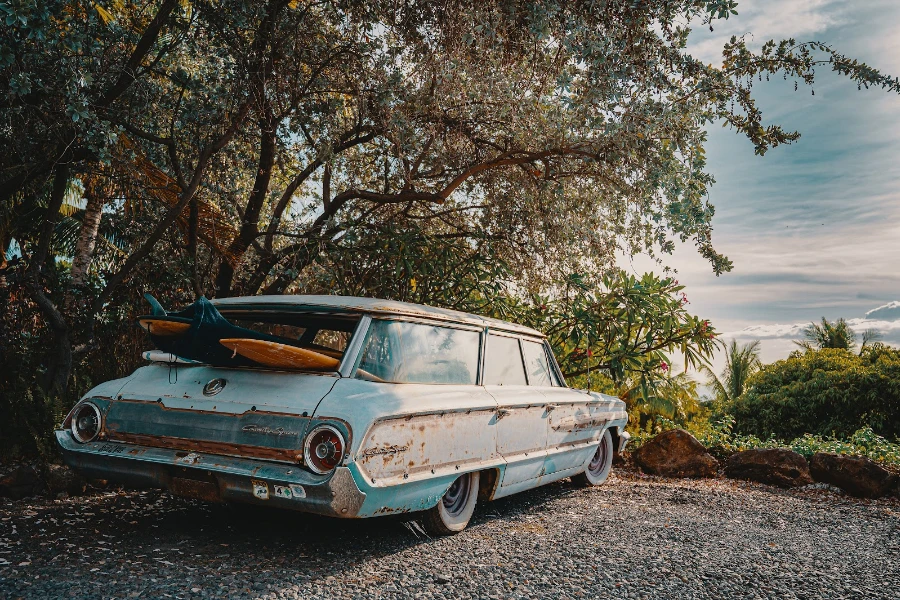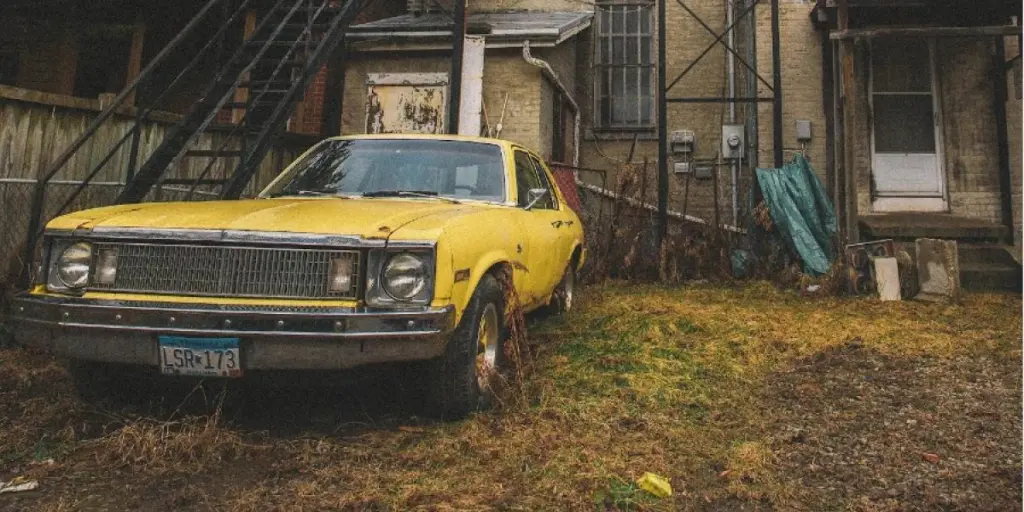Car damage due to external factors can spoil the driving experience as well as the chance of resale. To facilitate an auto business deal, each component of the vehicle must be in perfect condition.
Hence, in cases where the vehicle has been sitting for months, follow the guide below to learn how to bring an abandoned car back to life without damaging its core systems.
Table of Contents
The negative effects of not using a vehicle for months
What to do before starting a car that has been unused for months
How to effectively start the engine after idling
Final word
The negative effects of not using a vehicle for months
Leaving a car unused for a considerable period can inflict damage on some of its more fragile parts. These include the pneumatics, hydraulics, and electrics, which are more susceptible to damage without use. A car that hasn’t been turned on for a year or more will most likely develop a serious fault, and sometimes these faults are hard to detect unless an inspection is carried out. Below are possible scenarios that can occur when a vehicle is left dormant for too long.
Fluid issues
Not warming up a car for a long period can stall the engine or result in a deterioration or leakages of the engine’s parts. A puddle of oil or water under a parked car is an obvious sign of leakage. Fluid leakage means that the car requires extra attention because fluid is the “lifeblood” of a car, supporting many of the car’s functions. Car fluids are segmented into different sections, including the brake fluid system, power steering fluid system, transmission oil system, coolant in the expansion tank, and the fuel tank. Leakages in any of these vital areas can cause major vehicle breakdown.
A thorough inspection and repair must be executed on all fluid-related functions of a car, including the radiator and cooling system pipelines, before the car returns to the road.

Flat tires
A brand-new tire that is left unused for six months or longer can lose up to 15 psi – below half of most tires’ optimal pressure. Note that any car parked in a garage or parking lot for months will most likely run into tire issues. When inspecting such a car, it would be advisable to take a foot tire pump and potentially a new set of tires.
Driving a vehicle with flats poses potential dangers, and can cause the tire to overheat (which might lead to peeling of the rubber, or cause complete tire failure). Always monitor your tire pressure, and add air when they require it.
Clutch issues
When a car is left inactive for a very long time, the clutch discs may start to stick to each other, thereby toughening the clutch and making it difficult to open – thus causing issues with gear rotation – a common with vehicles that have manual transmissions.
To resolve this, warm the engine and shift into first gear, add a little a acceleration, then brake while tapping the clutch pedal incrementally, helping the discs to loosen.
Lighting system malfunction
Prolonged car idleness can also lead to oxidization of the headlight and bulb contacts. The lightning systems must be properly inspected and serviced before starting the car. Most car lighting system problems stem from simple issues like a burnt-out bulb, dead battery, loose wire, or corroded connection.
Stiffening of rubber parts
Rubber tends to lose its elasticity when exposed to air, and a car that has been sitting outdoors for months will most likely encounter such issues. Carry out a special treatment to restore the elasticity of the rubber components.
Hydraulic malfunction
Hydraulics rarely go bad in just a few months being left idle, but a car that is left for a year or more may experience a loosening of its brake and clutch actuators, and the power steering may also be affected. In this situation, the first place to inspect would be the hydraulic drives reservoir levels. Be sure to clean any clogging in the pipelines and at the joints, and on each side of the hoses. Also, test the brakes, steering, and clutch to see gauge their performance before starting the car’s engine.
Dead battery
Modern car batteries typically store and sustain energy for six months maximum. Within this period, they can power the engine easily. However, battery life can be shortened when exposed to low temperatures, for example, a battery exposed to severe frost can shorten its life to a month or even a week. In this situation, it’s best to replace the battery with a new one or charge the old one.
What to do before starting a car that has been unused for months
Inspect the engine oil
When considering starting a car that has been idle for months, the engine is the first place you’ll want to check as it provides the best indication as to whether a car will work. An unused vehicle may attract tiny animals to live in it as well as debris such as bird’s nests and leaves. when a car sits idle for a long time, the engine may also dry up, leading to possible leakages. In this case, it would be necessary to change the engine oil and apply oil (fogging oil) to each of the engine’s cylinder walls. Fog oil typically helps to prevent rust and preserve the internal engine components during the idle period.
Inspect the lights
Don’t expect the lighting system (consisting of the headlights, high-beam lights, fog lights, brake lights, reverse lights, and indicators) to still work the way it did before a long period of idleness. Inspection of this kind is best achieved with two or more people, one to activate the lights and the other to check whether they’re working.
Check for leakages
Before checking the engine, take a look under the car for signs of leakages. A car with a leakage issue will have some form of coloration on the floor, perhaps in the form of a black or brown-colored stain. Inspect the engine oil and coolant levels to confirm their condition. It’s also okay to seek the help of a professional at this stage to help analyze and diagnose the leak. Engine oil leaks normally leave a black or light brown color, while transmission leaks are red or brown. Meanwhile, steering leaks leave a bright red or brown color, while brake leaks leave a yellowish color.

Check the battery
Batteries have the potential to lose voltage when left idle for an extended period. Chances are, the voltage might have dropped below the ignition level so that it no longer has the ability to power the engine. In most cases, the car will require a jump start. To do this, jump-start the car and keep the vehicle running for 5-10 minutes. This will help to recharge the battery. Restart the car again to know if it responds. If it refuses to start, it means the battery or the car’s electrical system is faulty.
Assess the engine for debris, or corrosion, and check the battery terminals to see whether they’re clean before jump-starting the car again. If everything looks good, the car should start effortlessly.
Inspect the tires
Before taking a car for its first spin after months of idleness, run some tire checks, test drive the car, and monitor the condition of the tires when in motion. The tires may appear normal during the inspection, but things can change when the car gets on the road. The driver might begin to feel some roughness and/or vibrations, especially at the steering wheel, or notice some unusual noises coming from the engine.
When the stationary tire carries the car’s load for a long period, the weight will eventually push on the tires, making them expand and causing the rubber to stiffen. Also, check the air pressure and adjust as necessary.
Inspect the gas
When the gas is kept in a motor tank for more than a month, it starts to break down. The gas begins to lose some lighter parts of its components via an evaporation and oxidation process, which reduces its ability to effectively combust. This degradation produces some gummy residue that may penetrate the fuel system, increasing the possibility of a potential blockage.
Leaving fuel in the tank for a long time comes with some other downsides: it develops a bad smell, gets sticky, and can make the engine misfire and stall.
When dealing with a car that has been undriven for more than a month, add some fresh gas to the fuel tank to dilute the bad gas so it won’t cause damage when it passes through the car fuel system.
Alternatively, a fuel stabilizer inserted into the gas should prevent degradation, regardless of whether the fuel will be left for a long period or not. Stabilization will prevent the vehicle’s fuel system from spoiling and stop degradation for up to a year.
Check for rodents
Not warming up your engine for months can attract unwanted visitors like rodents, mice, rats, etc., who may make the engine their new home. But it doesn’t end there; they can also cause destruction to the car, like biting the wires and damaging sensitive parts of the engine (such as engine hoses, plastic panels, and wiring).
To get red of animals fast, clean and disinfect the car, especially the engine surroundings. Then check if any parts of the car have been damaged, repairing as necessary.
Furthermore, take action toward preventing a second invasion, such as spraying a peppermint around the car or placing moth killer in some of the car’s internal spaces.
Check the brake fluid
Confirm that the brake fluid gauges are right; the mark should be anywhere between the maximum and minimum point. This should help start the car. But if it doesn’t work, use a jump-starter to start the car. There might also be a need to top up the fuel pump’s starter fluid.
Take a closer look at the car base for signs of leakages and, as mentioned previously, the color of the leak will give an idea of where the problem is coming from.
How to effectively start the engine after idling
When re-animating a car with a manual transmission, they are a few steps to follow:
- Make use of a high-capacity battery: The beam headlights must be switched on for 5 seconds at least to help charge the lights’ electrodes. Once complete, the battery should start functioning at optimal capacity.
- Hold down the clutch before igniting the engine: This reduces the amount of load from the crankshaft. After the engine has run for a while, free the pedal by gently removing your foot, before pressing the pedal again immediately if it pushes upwards. Then turn on the starter within 10 seconds for around 15 seconds, avoiding prolonged rotation, as this can kill the battery. When igniting the engine, don’t turn the key until after adding fuel by using the gas pedal.
Final word
Many issues can arise when a car hasn’t been driven for a long time. However, a couple of hours’ inspection or running an engine diagnostics test can reveal what is wrong with the car. Follow the steps above to restore and render a vehicle and its engine problem-free.
Finally, discover budget-friendly and reliable motor parts and tools for your idle vehicle restoration via Alibaba.com.




